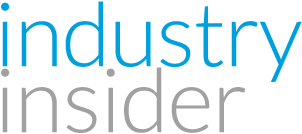Freight delays, raw material shortages, labour scarcity… 2022 had it all.
At a time when money was flowing into the housing and construction sector, both from Government and the private sector, in many ways it was the best of times, but the post-Covid hangover of freight and logistical disruption, missing labour, sudden inflation, and a raft of other issues, made it a year of turbulence and ever-changing expectations.
And as we end the year, many of these issues haven’t yet gone away. We spoke to a number of professionals to get their review of the year, a few highlights and some predictions for 2023.
Crystal ball is Broken
Few businesses experienced the highs and lows of 2022 like Winstone Wallboards. Like most businesses Winstone was impacted by logistical challenges the likes of which we hadn’t seen since the ‘70s.
While their shortages of certain stock became headlines throughout the year, for Gordon White, Residential Market Manager, Winstone Wallboards, there was also pride in the way they faced the challenge.
“From our side of things, it’s probably been one of the more challenging years that the business has experienced. And I think it’s probably fair to say that that’s been the case for every merchant and supplier, and everybody involved in the trade side of things,” White says.
“When I look at where we’ve come from since around mid-year when we had to go into an allocation model, I’ve been really proud of how the industry has come together to work through it, particularly with the plasterboard issues and the supply side.

Photo credit: Winstone Wallboards
“I think everyone will agree it hasn’t been easy for anyone and we would like to acknowledge the stresses and strains that this has caused for our trade and merchant customers business, but I think overall the industry has done the best possible job coping with an obviously stressful situation,” he says.
White says that for the industry as a whole, there’s been a lot of change, and some of the recent industry supply chain issues have caused industry to become more flexible and more efficient.
“A big part of that was maintaining a careful balance between optimizing as much volume as possible into the market, but also making sure stock was getting to the customers who are actually ready to go.
“But the slightly more positive side of things is how customers have worked to really respond to say; “Actually, I just need to understand when I need my stock”, and to work with merchants around making sure that they’re clear on those timelines.
“I think our biggest challenge really has not probably been so much the manufacturing side of things, but making sure that the board is going to the right places,” White says.
So, does White have a crystal ball for the coming year?
“It’s still busy out there compared to years gone by. But we have seen some softening, particularly in that residential market – as I’m sure everybody has – and we expect that to continue into the New Year.
“But who knows? Our crystal ball has been broken before.”
No casualties
When Martin Swann, Director, DLA Architects, Hamilton casts his mind back to the challenges of January, February, March, this year, it seems like a world ago.
“But really, we’ve come out of it surprisingly well. We did more than survive. The last financial year was pretty good. And I think we’re still reasonably upbeat and for the next six months, we’re still pretty busy.”
Swann says DLA “didn’t have any casualties” in the past year and puts that down to his business’s diversification into commercial, industrial, health, and education sectors that has helped insulate them against some of the vagaries of the residential housing market.
Swann is quietly optimistic that cost inflation in the sector will peak sometime soon, and a slowdown would feed into that.
“At the moment it’s unsustainable. It affects not only materials, but transportation costs, petrol, trucking, all those downstream things, let alone wages,” he says.
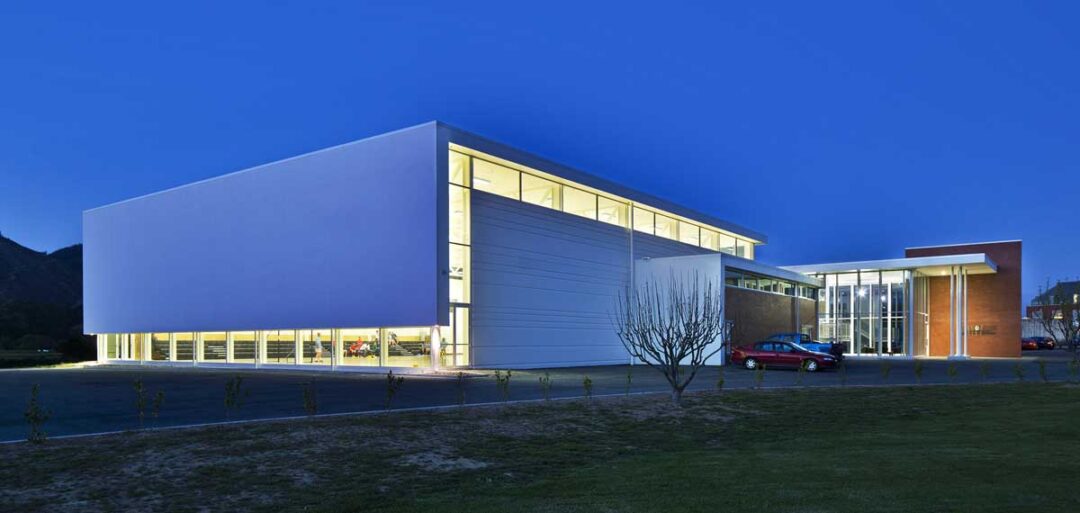
Photo credit: DLA Architecture
“But having said that, I think prices will stabilise and inflation will come back under control, but it’s a matter of when.
“As I said, everybody – our consultant teams, our collaborators, engineers, the QS’s, building contractors, the good practices, the good companies, they all seem to be stretched and you’re still having to book stuff in months in advance of when you’re going to need it.
So, personally, hand on heart, I believe the threats are a little overstated,” Swann says.
Nick Batt, General Manager, Marshall Innovations reports a big year and names freight disruptions as a key issue.
“It’s been a rollercoaster. We’ve pretty much stayed on point in regard to product and being able to supply, but it’s got skinny at times – more than we’re comfortable with. The only way you can create a level of insurance is to increase your stock holding,” he said.
Batt says he doubled stockholding on several key lines to ensure continuation of supply.
“Freight from China still seems to be okay. Europe has been a bit sluggish, but the US is a challenge. It’s political, it’s Covid, it’s lack of resource globally. So yeah, I think we’re all facing the same challenges.”
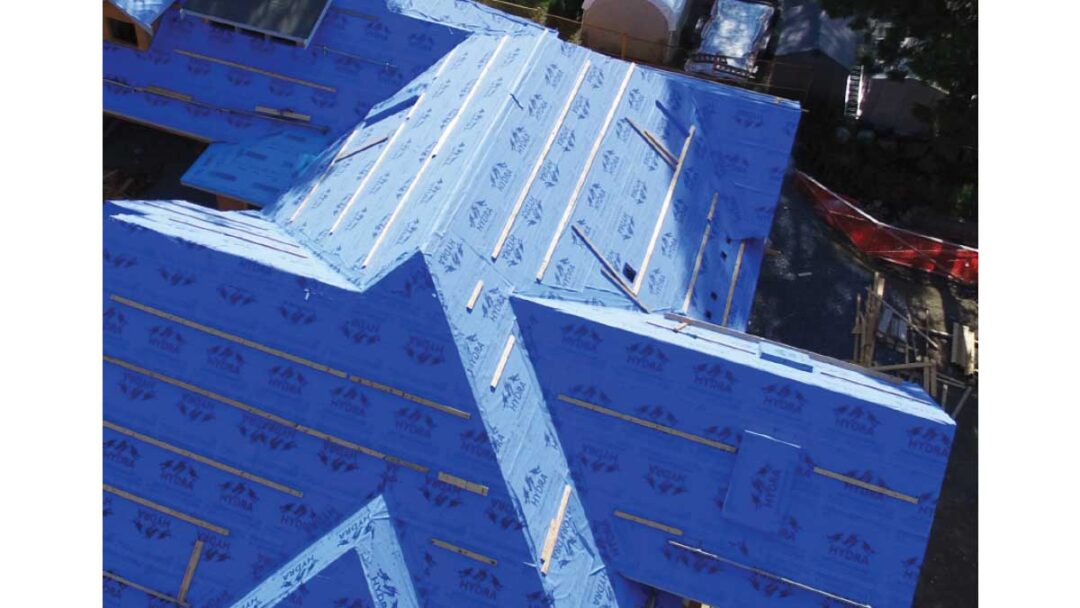
Photo credit: Marshall Innovations
Batt says that assessing how the construction market is faring is dependent on who you speak to.
“Speaking with group home builders and their national sales reps – some of these guys who have been used to rapid growth – it’s really pegged back. So yeah, I guess there’s definitely a slowdown coming there.
“But when you’re talking about the more specialized boutique local builders, they still have a couple of years of builds there.
“And, if we’re talking about high end, Government sort of commercial building, some of those larger projects which have already been set in place are still going to be cranking on.
“And those high-end builders that people have been waiting three years for – it’s not going to get cheaper to build, so they’re saying, “let’s carry on.”
Batt says with an all-time record of 51,000 consents out there to be built, there’s a lot in the pipeline ready to go when conditions are right.
“We’re hoping that things will bounce back for that low to mid-range house early in the year. But I think it’ll probably be around February/March, even March/April before we start to see any true signs as to where the market’s heading.”
Batt’s highlights for the year have mainly been around people and the opportunity to again be face to face with customers, clients and team members.
“We’ve got a fantastic team who are out there working hard, and I think we punch well above our weight. But we get around to many different venues and locations, shows, expos, conferences, and I can quite confidently say we’re usually the guys who are up earliest and we’re working the latest.”
“The CONZTRUCT trade shows have been fantastic for us – an excellent platform with a diverse range of attendees – just being able to connect after such a long break with Covid.
“We can say the same for the Design Experience with the architectural market opportunity, and Asian Construction Expo as well – another fantastic platform. It was just really good people being able to see each other face-to-face again and ask questions that they typically wouldn’t over zoom,” he says.
Where’s everyone gone?
Phil Green, Director, HG Rose Architects is based in the booming region of Tauranga – one of the hotspots in the whole country at the moment.
“This last 12 months have actually literally flown by, and we’ve been very lucky with the way our business has gone this year,” he says.
“We’re also working with Insight Architects here in Tauranga, and so between the two of us, we’ve had very good clients, with high-end builds, large commercial builds, industrial/commercial, and a lot of other mixed stuff as well as Ministry of Education work.
“We’ve diversified quite a lot over the years and just to make sure that we aren’t caught out by any of the little economic humps and bumps that come along,” he said.
Green hasn’t seen a slowdown as such, just some clients “trying to rearrange their thinking”.
“They didn’t cancel anything; it just gave us a bit of a delay – which was actually good because it gave us a chance to complete other works that we were involved with at the time. So, we had a couple of small breathing spaces which played in our favour.”
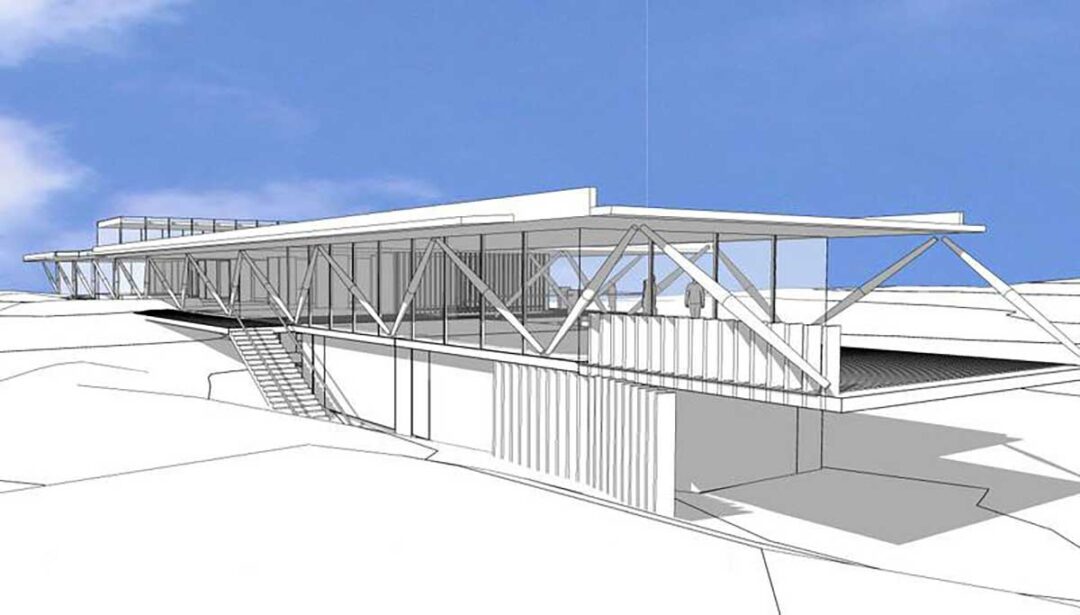
Photo credit: H.G. Rose Architecture
Green says that the consensus among his peers is that the whole Bay of Plenty and part of the Waikato are still going ahead leaps and bounds.
“At the moment there’s still a few people trying to make that final decision, especially on medium and high-density housing issues where we’ve done preliminary work on them. So, with the plan changes that Tauranga City have just gone through and about to ratify – as soon as they’ve been rubber stamped by the commissioner – it’ll be full-on again,” he says.
Green says that the key issue for his business is finding experienced staff.
“We would love to bring in people from overseas. We’ve got a couple of people here in the country who come from South America and from South Africa who’ve now got residency here, but it’s a three to five-year battle, and yet, all of us in the architectural and design fraternity, are just screaming for qualified staff.”
“No matter who you talk to, everyone is asking the same question; “Where did everybody go?”.
Green says the slowdown is a matter of perspective.
“Well, actually that’s the thing. Depending on who you talk to, there’s either a slowdown or the work going forward is constant or even more on top of what they’re already doing.
“I think it’s more of a business attitude. I think it’s all about communication and contacts, and those people who sit back and wait for things to come to them, and the ones who, like ourselves, are always out there. We’re social animals. We love to meet people.
“And through those meetings, you make contacts. I think a lot of other firms who suffer maybe not geared up or thinking that way.”
Wealth effect
“It’s been a bit of a messy year,” says Paula Clarke, Director, GO Architecture.
“There’s been lots of illness all year around, so it’s been a little bit messy around health – some people in the office, and not really getting into a routine before it all gets thrown up in the air again.
“So, that’s been the theme this year. It’s been busy on the work front, but the quoting has dried up,” she says.
Go Architecture celebrated 5 years in business this year, focusing on about 95% renovation work, with some commercial work and high end residential.
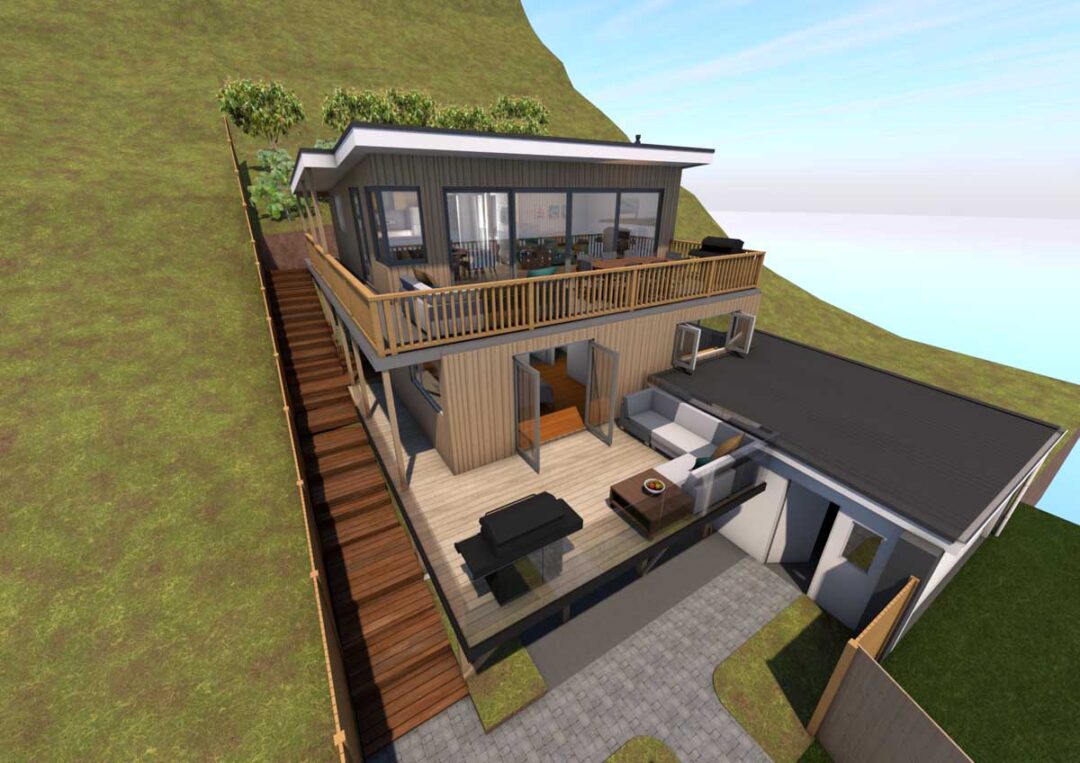
Photo credit: GO Architecture
But Clarke says that makes them “the canary in the gold mine” if market conditions drop away.
“Clients have been getting a bit more nervous about borrowing money, and how much banks will lend.
“So, we’ve had a few jobs that have to come back with the scope on them changed – some of them have come back a couple of times because the bank keeps changing what they’ll loan them.
“And people have been worried about the material shortages – I think a lot of it’s quite well publicized and when we are talking to people at the start, it’s quite a way before their building anyway. So, we’ve had some time to get that planned,” she says.
Clarke says that the ‘wealth effect’ of having your house value going perpetually upwards, has fallen away and that has dampened confidence in the residential market somewhat – “because there’s more of a focus on over-capitalizing on a home, which people forgot about last year”, she says.
“We’re in Lower Hutt, which had some of the biggest growth and now had some of the biggest drops. Some houses have dropped 30%. So that drops what value people feel like they’ve got in the house.
“Last year it was clear that everybody was out of touch with reality. It was clearly not realistic – we were just waiting for the hammer to fall. So, this year was a catch up with reality and next year is kind of something else again.”
But a slowdown also brings opportunity, Clarke says.
“If somebody called me and asked for a quote last year, I wouldn’t have even been able to go and give them a quote for two months, and then they’d have to wait three or four months for us to start on the work… But now somebody can call us and say: “I’ve got an urgent job that we need built” – we can help them, the lead times have shortened,” she says.
Housing affordability
Jonathan Brooks, National Lightweight Systems Manager, NZ Brick Distributors says it’s been an interesting year, with new products, a new State of Clad brand, and solid growth.
“This is the third year in a row with significant growth, which is a really exciting place to be. And then, looking into next year, its actually looking really exciting for us.
“Obviously, we’re starting to see some of the industry commentators talk about a drop in building consents, but that’s probably going to be more around detached residential. Most of our work is in that medium density space, which there’s really strong demand for.
“Of course, there’s going to be some macro challenges in that about, ‘do we have enough people in the building industry to actually build at the levels we’ve been building in?’ Especially with limited migration happening and stuff at the moment and just global demand, people are needed everywhere, which is a bit of a challenge,” Brooks says.
“I think the biggest risk for the industry is the affordability of housing. And especially if you look in places like Wellington and Auckland, it’s governed primarily by the cost of land and a lot of that’s controlled by Council and how easy they make it for developers to intensify existing sections.
“That’s the only way we can really bring housing into a more affordable level,” he said.

Photo credit: State of Clad
Brooks says the dream of the old quarter acre section is now unachievable for most people, especially people just getting onto the housing ladder.
“I think, Kiwis are starting to look at that townhouse and apartments for living in. Especially for a starter house, that’s going to be the first steppingstone for a lot of people, and it makes the most use of the limited resources we’ve got.
“So, I think we’ll start to see that, especially in places where housing is tight, that it will become more and more popular – Auckland, Tauranga, Wellington, Queenstown, et cetera.”
“And I think there’s also going to be a change in that detached residential building. We’ll see less being built, but I think what we’ll see is they’ll be larger and more expensive because the people who are building a detached residential house will probably be a third or fourth home buyer.
“So, the volume may be less, but it will be a higher value. So, actually, if you look at the dollar value across the build, I don’t think it’s actually going to change that much.”
The power of people
Scott Hunter, General Manager/Executive Architect at Assemble says one of the big highlights of the year, is just getting everyone back together and actually having in-person interactions with people.
“From a company point of view, we’ve really focused on the culture and social side of the business. We feel we’ve improved quite a bit over the past 12 – 18 months – getting people back together, trying to find the right balance for modern hybrid working, and I think we’ve found that. So that’s been good.”
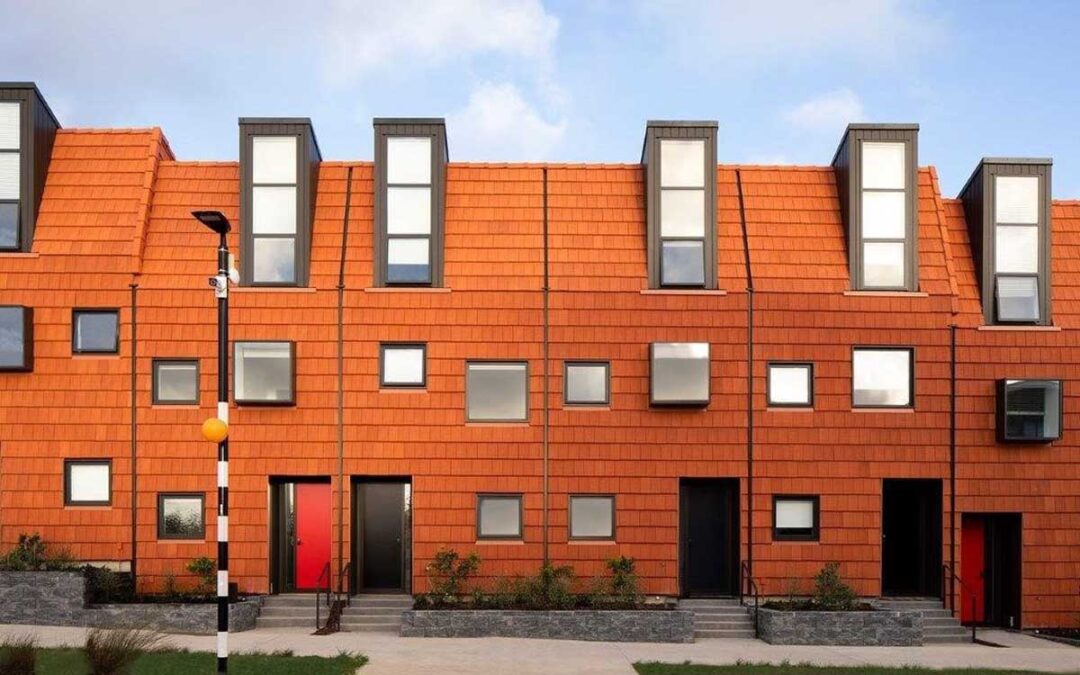
Developers: Avant Property Developments & Te Akitai Waihohua | Design Architect: Crosson Architects
Cladding: Monier terracotta Urban Shingle | Photographer: David Straight
Hunter’s pipeline is strong built on good long-term partnerships with B2B clients. And currently looking good till April to June next year – “Even with all the external factors going on, and all the doom and gloom in the newspapers.
“I can’t probably talk too much about the average homeowner. The majority of my clients are larger developers. The well-placed ones with good cash flow are pushing ahead.”
Like others Industry Insider spoke to, Hunter’s biggest challenge in the past year was the supply chain. So, he’s seen a lot of onsite or late project substitutions driven by supply chain issues and constraints.
“Not being able to get that cladding or that specific product for a certain amount of time – that was a huge challenge for the contractor, the developer, and us. Just having ongoing changes is hard on everyone’s motivation.
“The other challenge that’s been ongoing is just the sheer amount of legislative change. Looking forward, there’s more complexity on the horizon, I think.”
Hunter says his personal highlight of the year was getting back in front of people again.
“It was refreshing. We had one of our first client meetings three or four months ago. You forget how much you can actually get done in person. I know meetings have had their flack over the years, but generally in a good workshop you can work right through complex issues where you are all there and focused on the task at hand,” he said.
The Wrong Question?
For Michael Olds, General Manager, Resene Construction, it’s been “an absolutely massive year, there’s no two ways about it”.
Olds says while material shortages are still lingering for some in the industry, he feels it’s labour that needs attention.
“I think a number of businesses seem to be asking the wrong question at the moment. “It isn’t so much around material availability; it should be how’s your labour resource to achieve good business?” Because that seems to be the dominant theme across the entire industry – there’s not a general problem with material supply to a lot of businesses compared with 6 – 12 months ago, but actually having enough people to make and install products, that’s the common head wind.”
Olds says that Resene’s local manufacturing has been a “massive” advantage during recent disruption. They even procured and installed new robotics to their Glenfield, and Naenae manufacturing facilities to streamline the production processes.

Photo credit: Resene Construction
“Post 2020 and 2021, we’ve certainly enhanced our local manufacture, supply and delivery across New Zealand, with the prime focus being locally manufactured rather than finished goods being imported. As a country we need to be more passionate about buying goods that are not only made here but equally from companies that are owned by Kiwis.
“I think more than anything COVID and global shipping challenges made it absolutely apparent that New Zealand is an import reliant country, and to a large degree we didn’t need to be so reliant. We were almost lazy because everything was just so readily available, and at reasonable costs that we didn’t regularly consider alternatives to a large degree,” he said.
The talk of a construction slowdown – “There seem to be so many negative variables at play locally and globally, it is difficult to put your finger on timing. However, we do know that enquiry levels have dropped in the residential market. For our sector this relates to a six to nine-month lead into a slowdown, so at the very earliest, the potential slowdown for us, I wouldn’t see too much changing until March, April next year at this stage,” Olds asys.
Final predictions? “2023 is going to be as challenging as the previous two years, without the significant business bounce, and mask wearing most in construction experienced. Look after your work colleagues as everyone is under the pump. Be ready for change and adapt rapidly, as much of the change that will occur will be imposed by others rather than self-created. Finally, don’t take for granted what you have now, and work smarter to bolster your pipeline into ’23 and ’24.”
